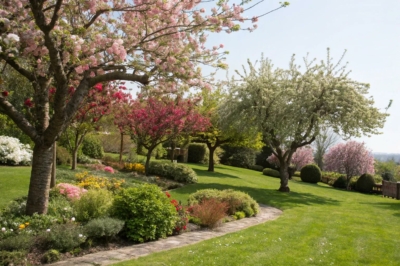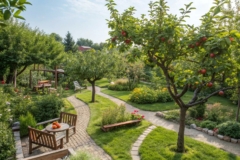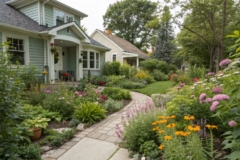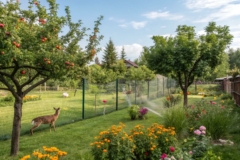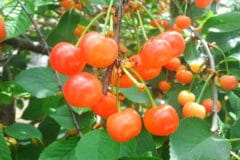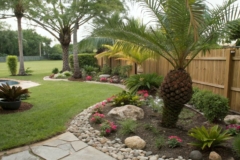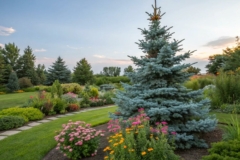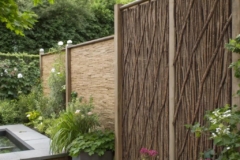1. Fruit Tree Seating Areas
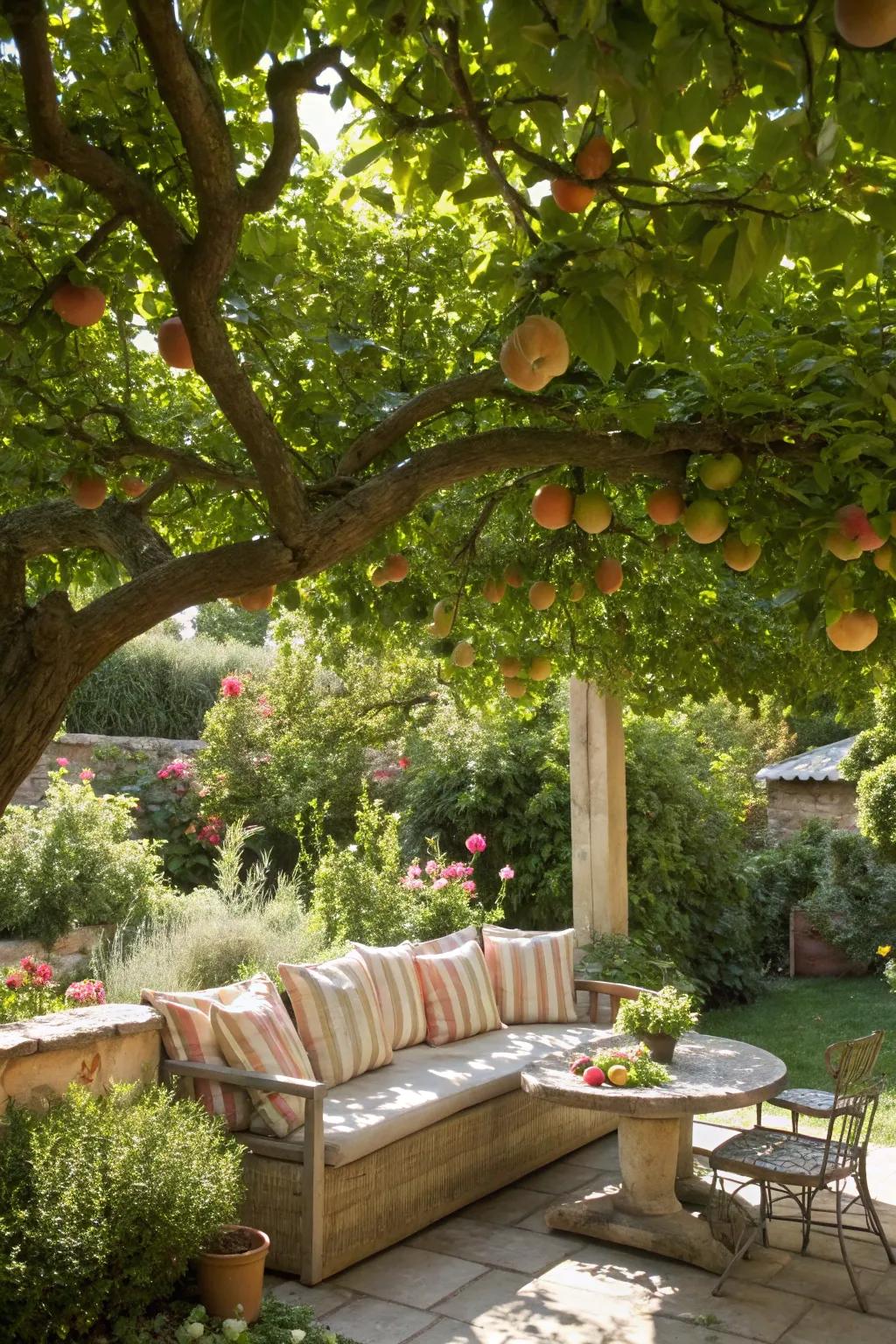
Place a cozy seating area under a mature fruit tree. It’s the perfect spot to relax and enjoy the fruits of your labor, quite literally!
A few choices to try:
- Outdoor Patio Sofa Set: Transform your garden into a cozy haven with this comfortable outdoor sofa set, perfect for relaxation.
- Garden Coffee Table: Enhance your fruit tree seating area with a stylish garden coffee table for your refreshments.
- Decorative Outdoor Cushions: Add a splash of color and comfort to your seating area with decorative outdoor cushions.
2. Fruit Tree Fairy Gardens
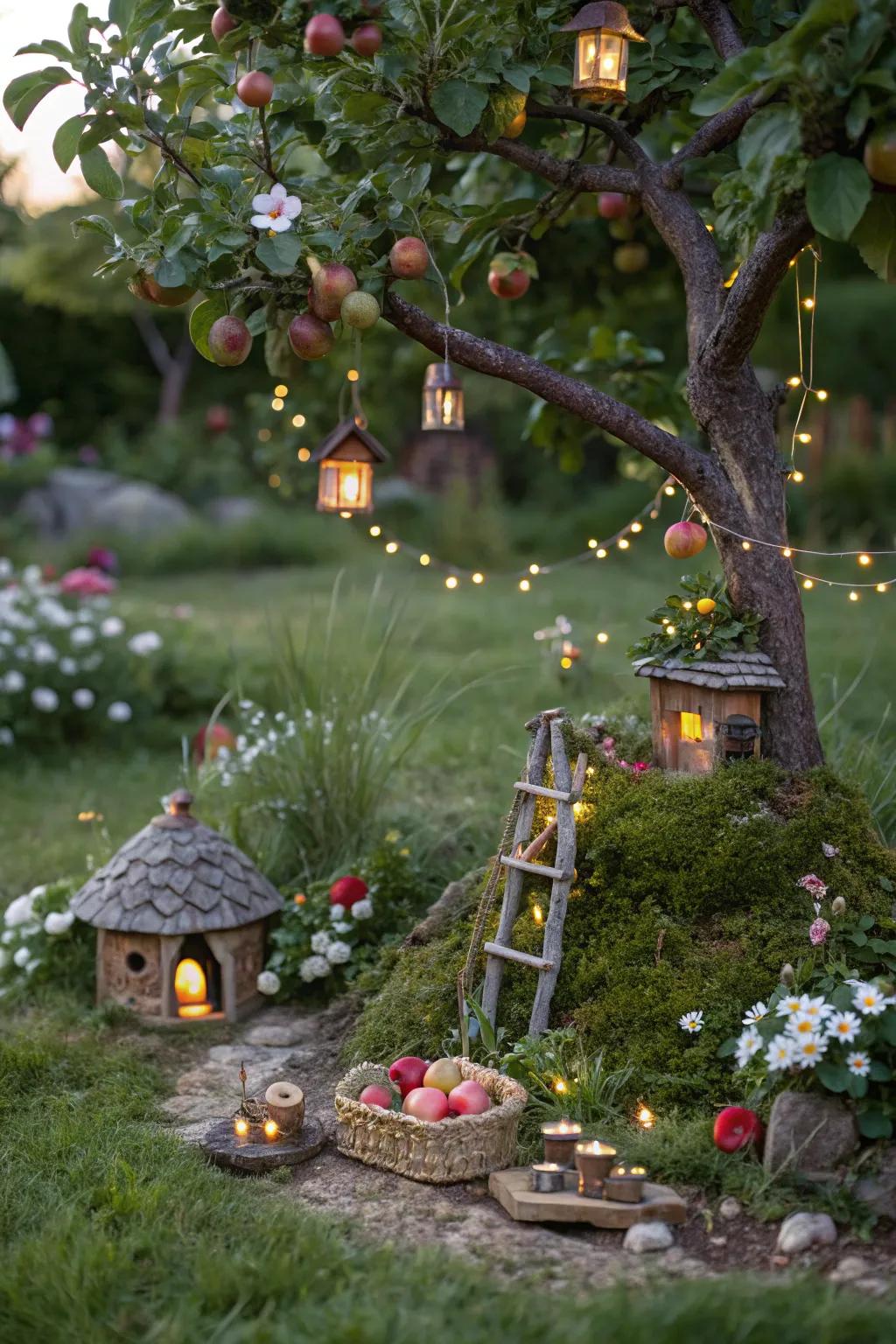
Add whimsy to your landscape by crafting a fairy garden under your fruit trees. It’s a magical surprise that delights both kids and adults.
You might give these a try:
- Miniature Fairy Houses: Create enchanting fairy retreats under your trees to spark imagination for all ages.
- Solar-Powered Fairy Lights: Add magical sparkle to your garden with eco-friendly fairy lights that charge during the day.
- Garden Fairy Figurines: Decorate your landscape with charming fairy figurines to enhance the magical atmosphere.
3. Fruit Tree Arbors
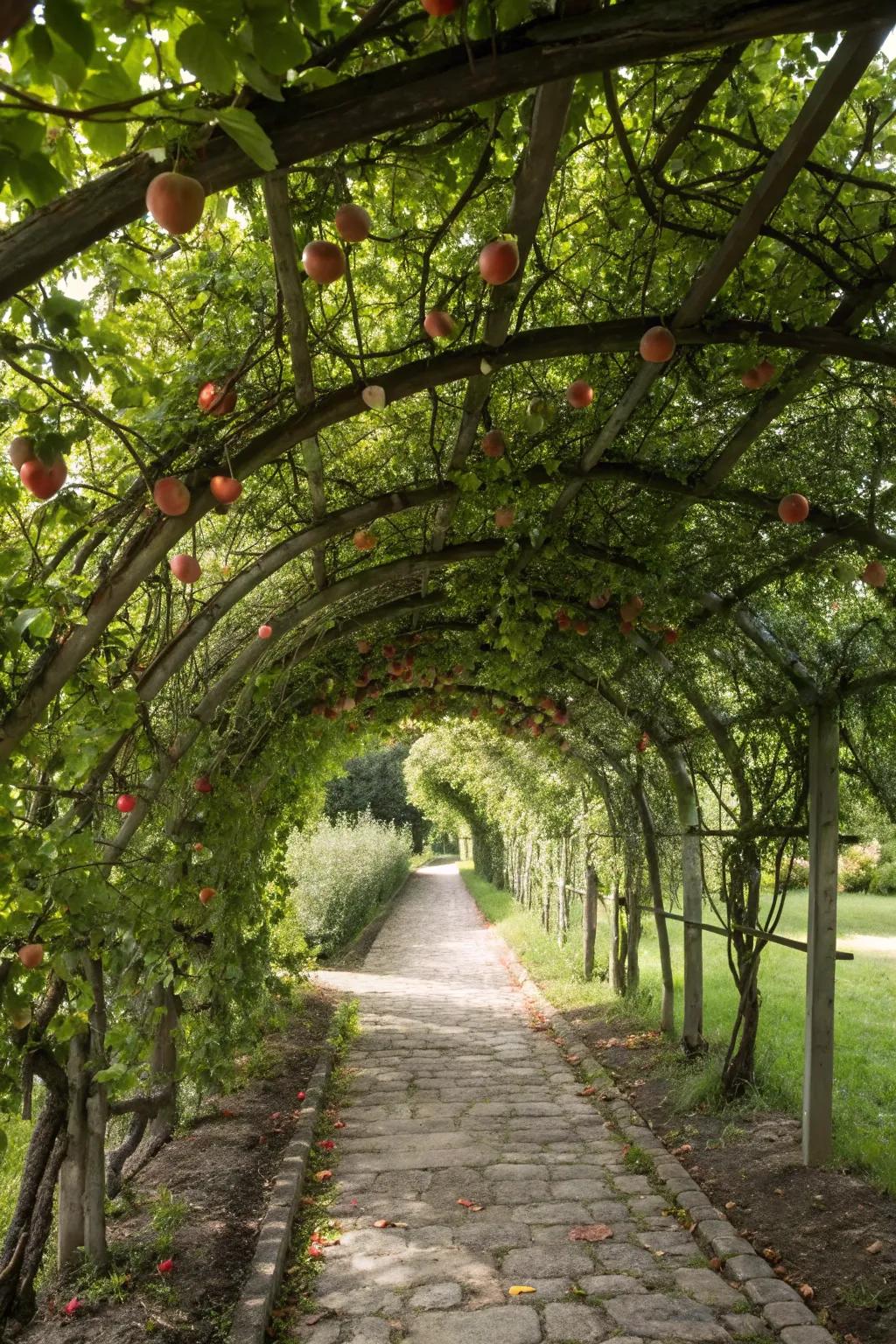
Imagine walking under an arbor draped with fruit-laden branches. It’s not just a passage; it’s a journey through a fragrant, fruitful tunnel.
Give these a look:
- Garden Arbor Trellis: Enhance your garden with a sturdy, decorative arbor for lush, sprawling fruit trees.
- Organic Fruit Tree Fertilizer: Nurture your fruit trees with this fertilizer, ensuring vibrant growth and abundant harvests.
- Pruning Shears: Keep your arbor neat and healthy with these reliable, sharp pruning shears.
4. Zen Fruit Garden
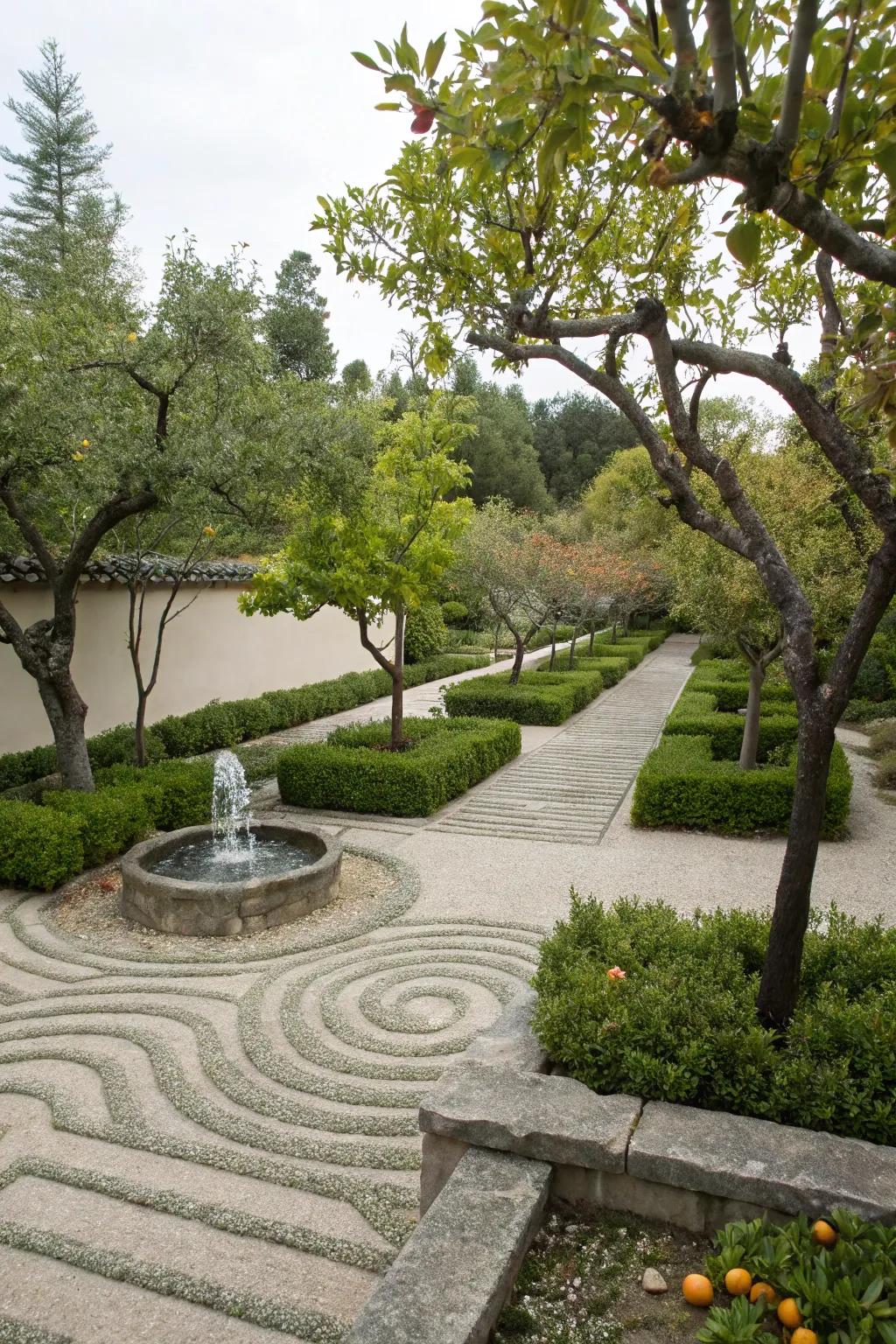
Incorporate fruit trees into a zen garden design for a peaceful retreat. Their calming presence and seasonal changes add to the tranquility.
Explore these options:
- Japanese Garden Fountain: Enhance your zen garden’s tranquility with a soothing Japanese-style fountain. Experience peace and serenity.
- Zen Garden Gravel Rake: Create calming patterns in your zen garden with a traditional gravel rake. Find your inner peace.
- Outdoor Natural Stone Pathway Pavers: Add elegance to your garden trails with natural stone pavers. Transform your walkways beautifully.
5. Shade and Shelter
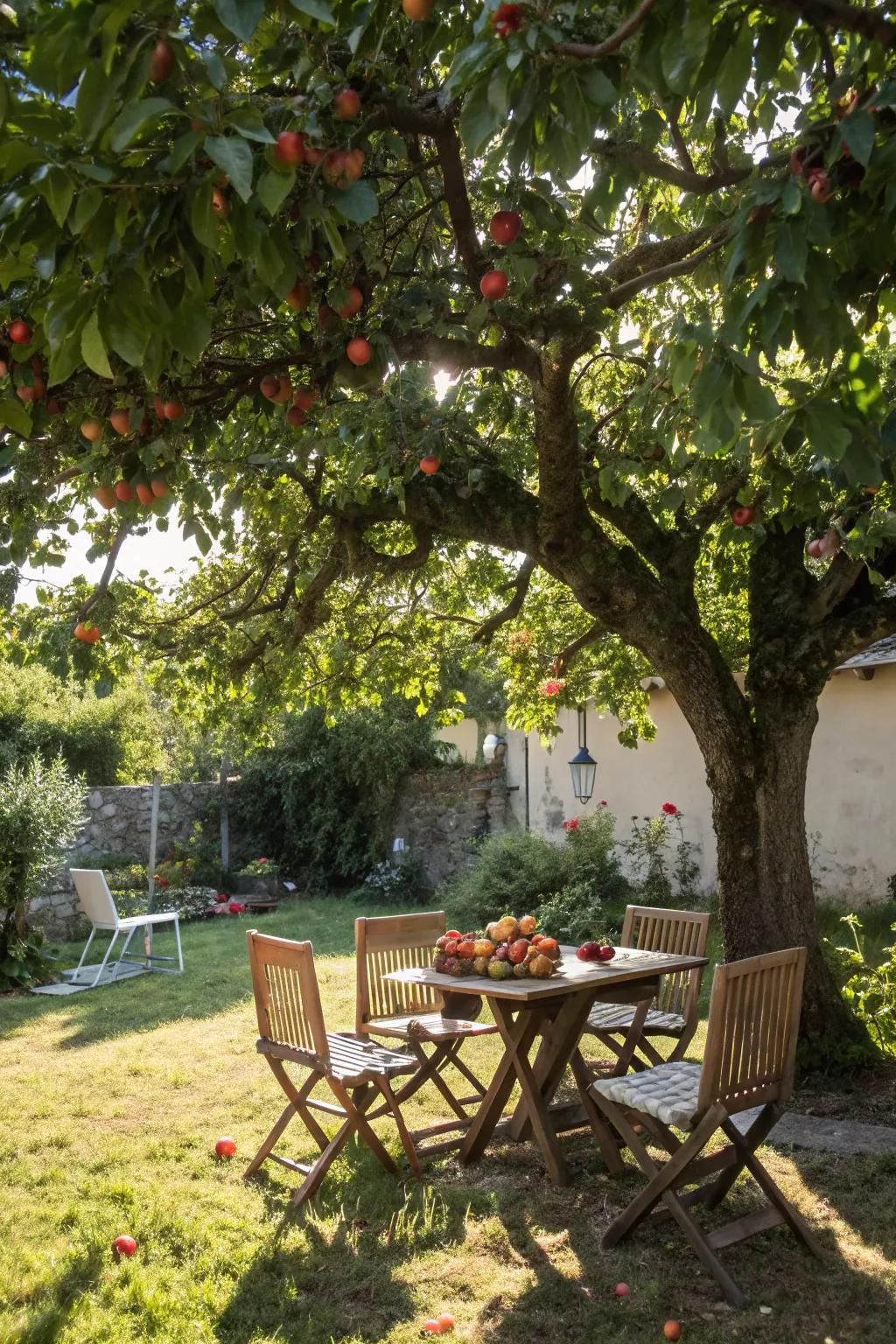
Large fruit trees can provide much-needed shade during hot summers. They offer a cool retreat while also serving up delicious snacks.
These products might help:
- Garden Hammock with Stand: Relax under your fruit trees with this cozy hammock, offering comfort and a delightful retreat.
- Outdoor Folding Bistro Set: Enhance your shady spot with this bistro set, perfect for alfresco dining and relaxation.
- Garden Tree Swing: Add fun and charm to your garden with a tree swing, creating joyful moments in the shade.
6. Living Privacy Screens
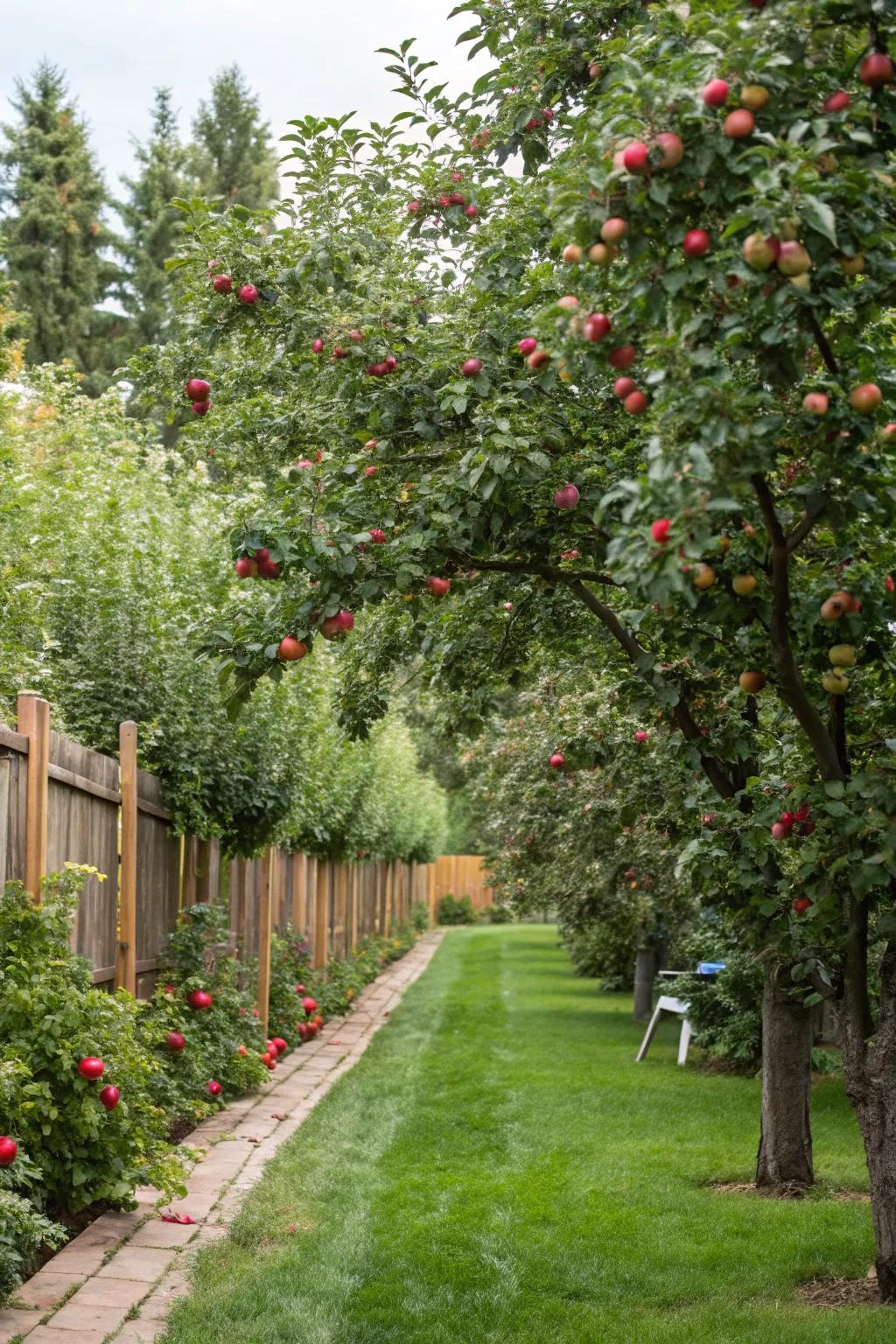
Plant dense rows of fruit trees to form a living privacy screen. They not only block out nosy neighbors but also provide tasty treats.
Check if these fit your needs:
- Fruit Tree Fertilizer Spikes: Enhance your fruit trees’ growth and yield with easy-to-use, slow-release fertilizer spikes.
- Pruning Shears for Fruit Trees: Maintain healthy, productive trees with sharp, durable pruning shears for precise trimming.
- Drip Irrigation Kit for Gardens: Install an efficient drip irrigation system to keep your fruit tree privacy screen well-watered effortlessly.
7. Creative Fruit Tree Espaliers
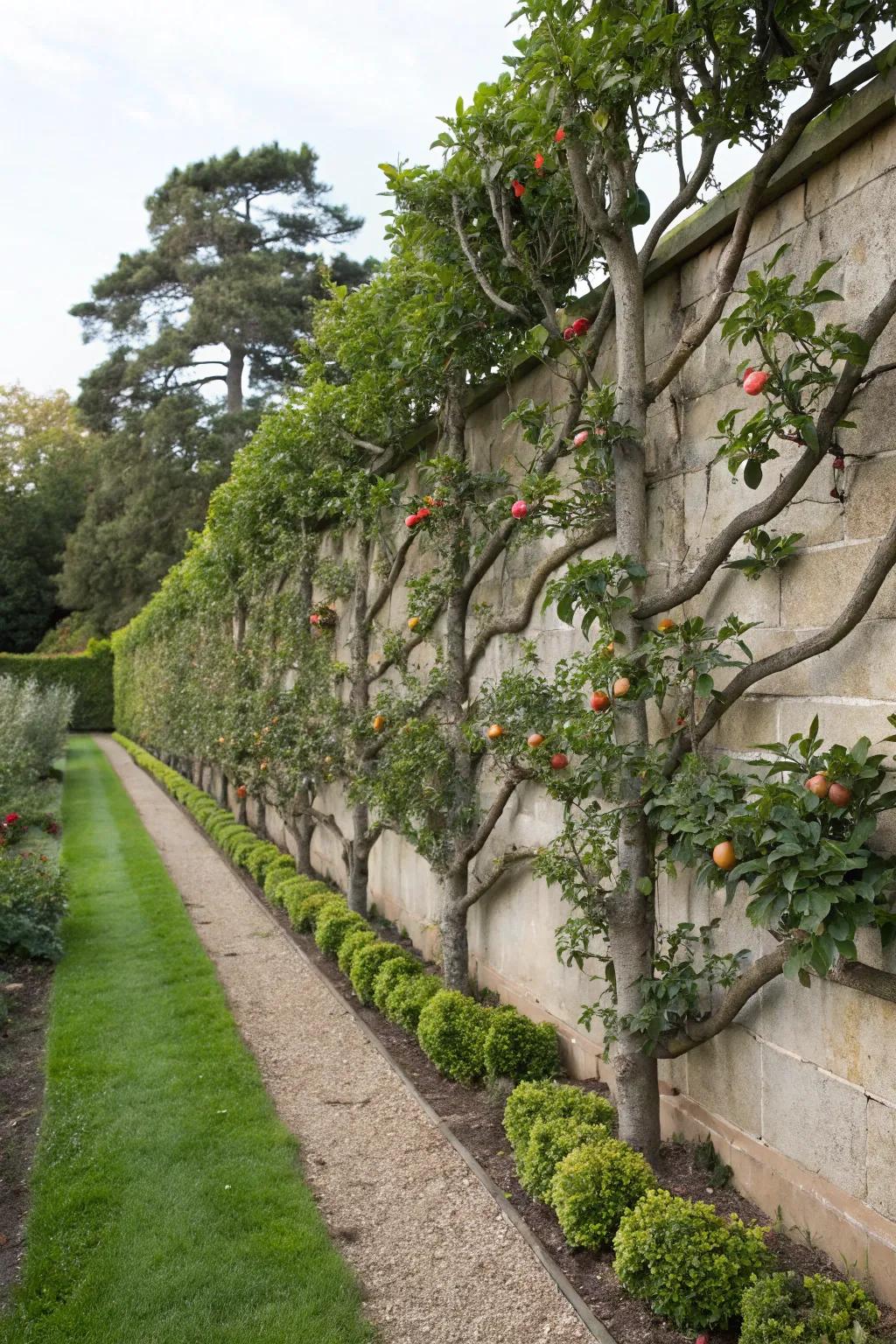
Espalier fruit trees against walls or fences for a unique and artistic garden feature. It’s a blend of form and function that’s sure to impress.
Some ideas to consider:
- Espalier Training Trellis: Enhance your garden’s beauty with a trellis perfect for training fruit trees. Easy to use!
- Organic Fruit Tree Fertilizer: Boost fruit tree growth naturally with this nutrient-rich organic fertilizer. Promote lush harvests!
- Pruning Shears for Gardening: Keep your garden pristine using sharp pruning shears designed for precision and comfort.
8. Permaculture Planting
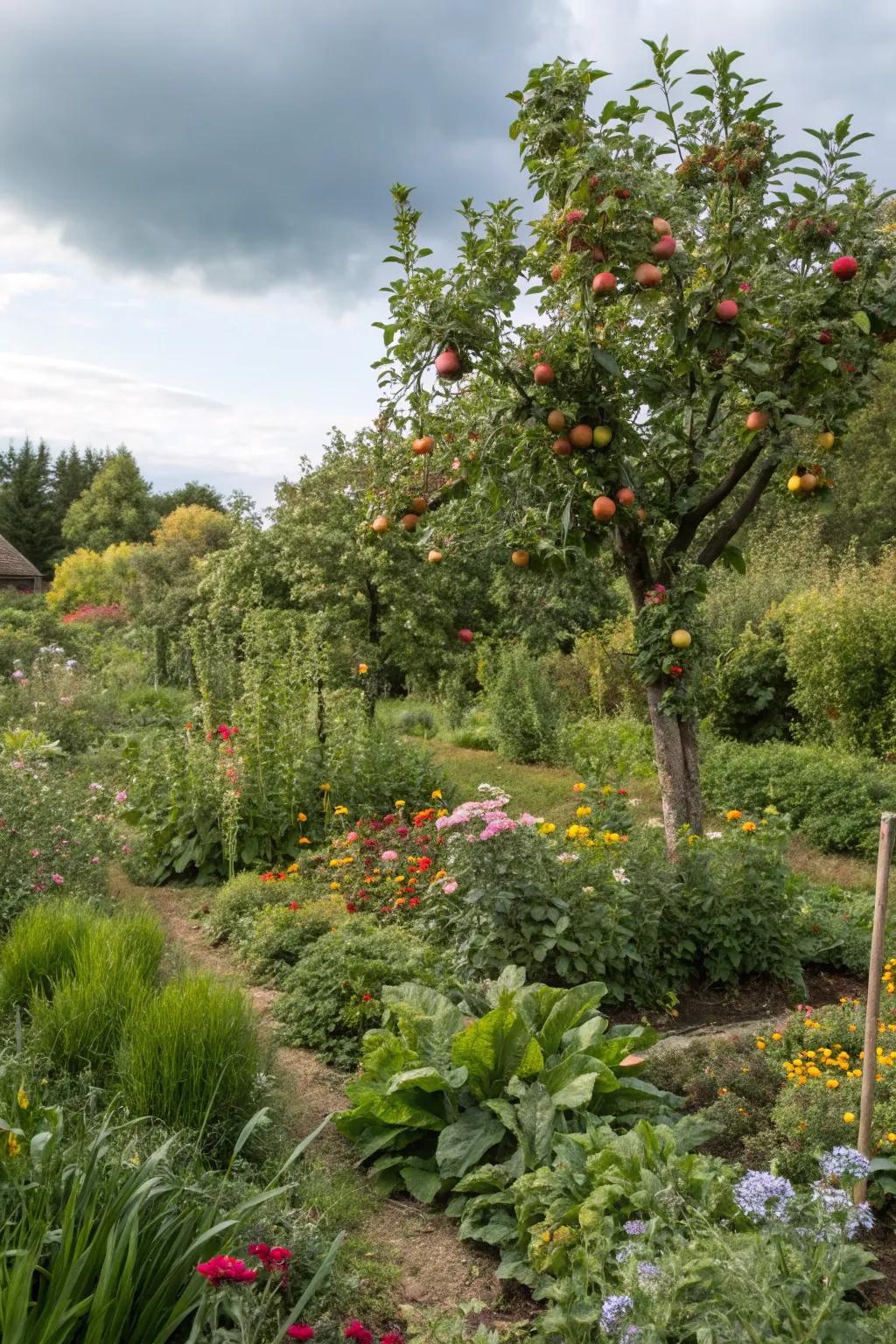
Embrace permaculture by surrounding fruit trees with companion plants. This approach enhances growth and supports a self-sustaining ecosystem.
Useful items to consider:
- Organic Compost: Boost your soil’s fertility naturally with organic compost for healthier, thriving companion plants.
- Fruit Tree Fertilizer: Enhance your fruit tree’s growth and yield with specialized fertilizer designed for fruit trees.
- Pollinator Attracting Flower Seeds: Attract beneficial pollinators to your garden with flower seeds designed for a thriving ecosystem.
9. Mix with Flowers
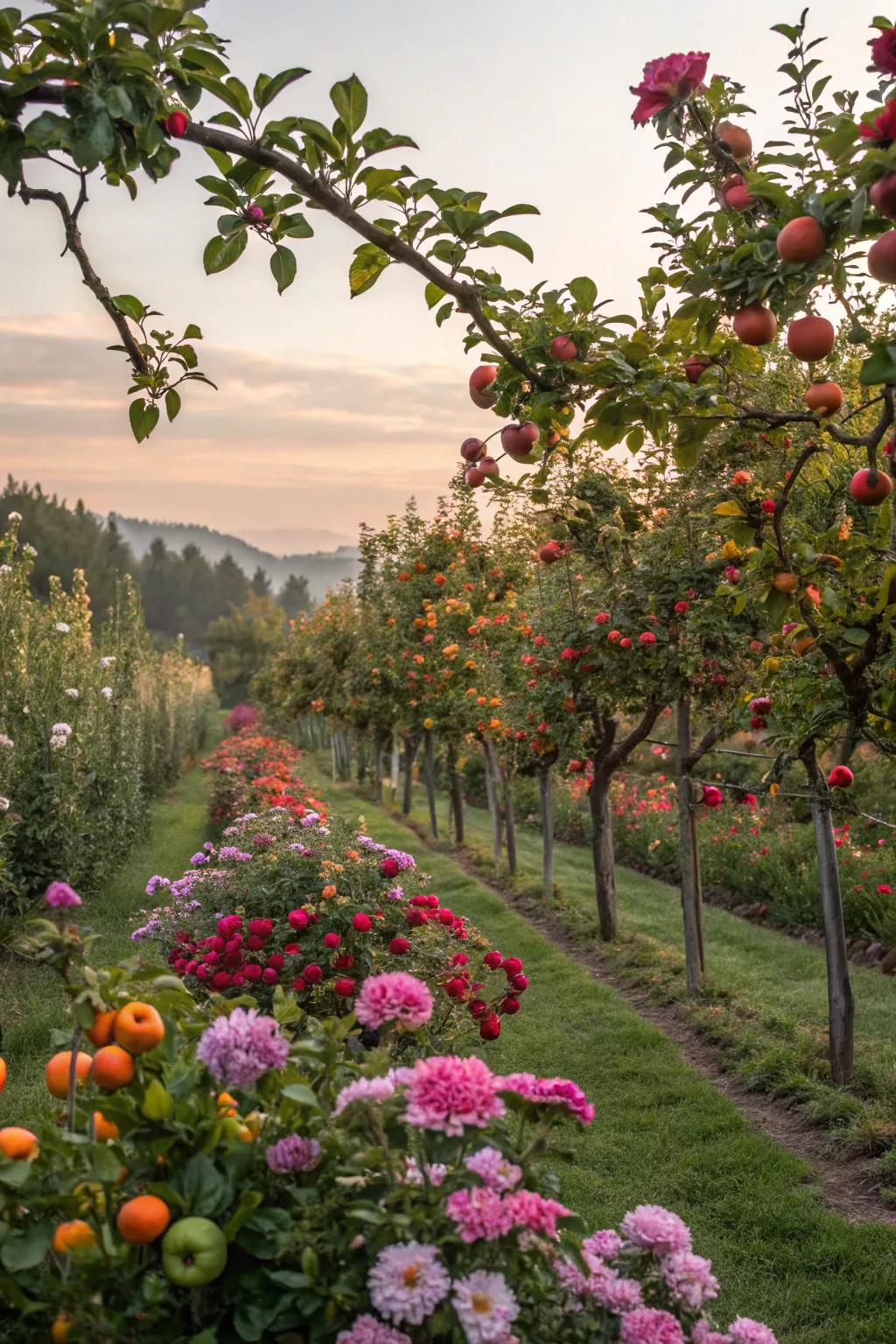
Combine fruit trees with flowering plants to create a colorful and aromatic garden. The mix of textures and scents can transform your space into a sensory delight.
Consider these options:
- Fruit Tree Fertilizer Spikes: Enhance your fruit trees’ growth with easy-to-use fertilizer spikes. Watch your garden thrive.
- Flowering Plant Seeds Variety Pack: Add diverse colors and fragrances to your garden with a mix of flowering plant seeds.
- Eco-Friendly Mulch for Fruit Gardens: Maintain moisture and prevent weeds with eco-friendly mulch, perfect for a healthy fruit garden.
10. Edible Borders
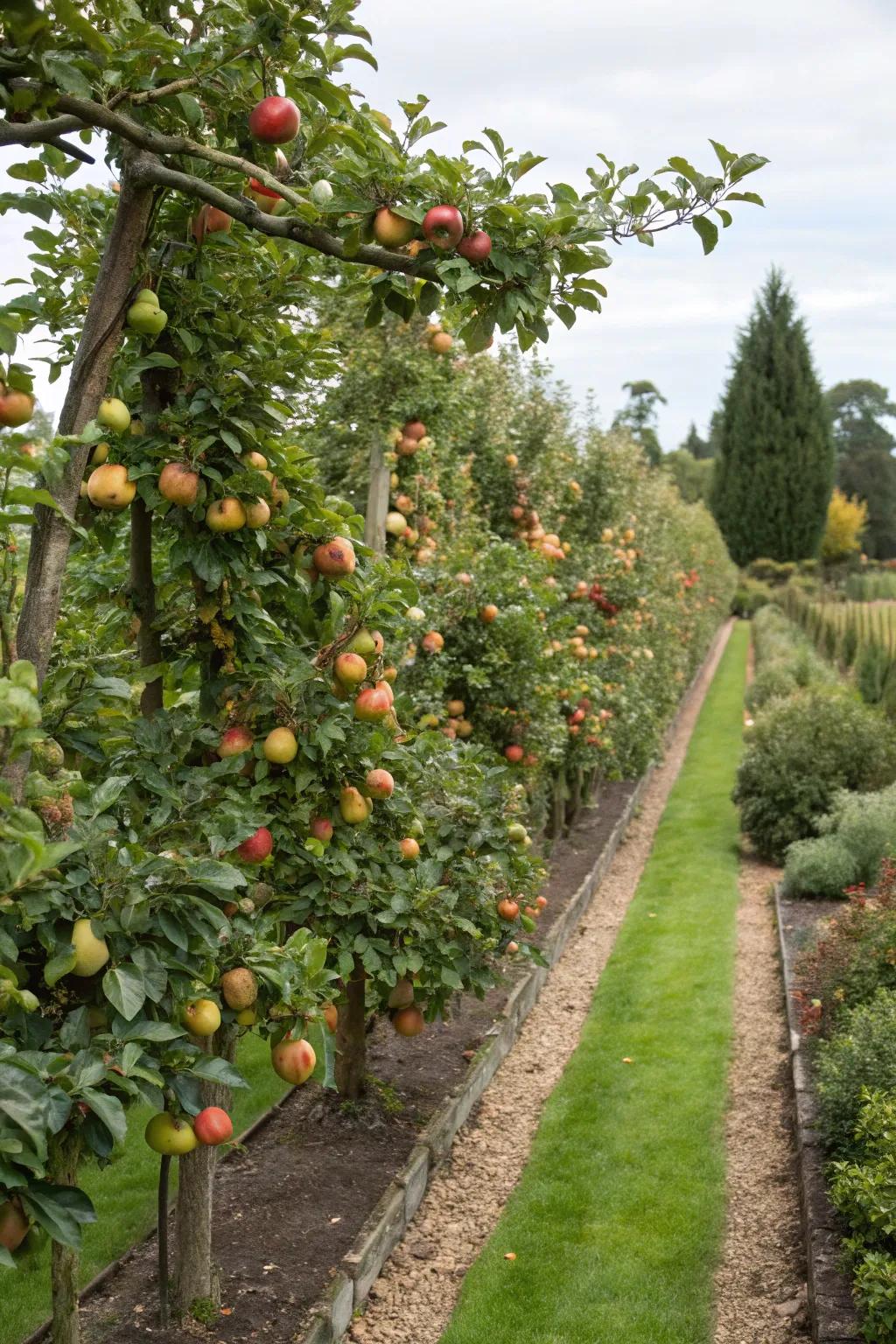
Use dwarf fruit trees to create edible borders around your garden. It’s a delicious way to define spaces while adding beauty and bounty.
You might like:
- Dwarf Fruit Tree Starter Kit: Start your edible border with a dwarf fruit tree kit for delicious and beautiful garden spaces.
- Garden Trellis for Fruit Trees: Enhance your edible borders by supporting fruit trees with a durable garden trellis.
- Organic Fruit Tree Fertilizer: Boost the growth and fruiting of your trees with organic fertilizer specifically for fruit trees.
11. Vertical Gardens with Trellises
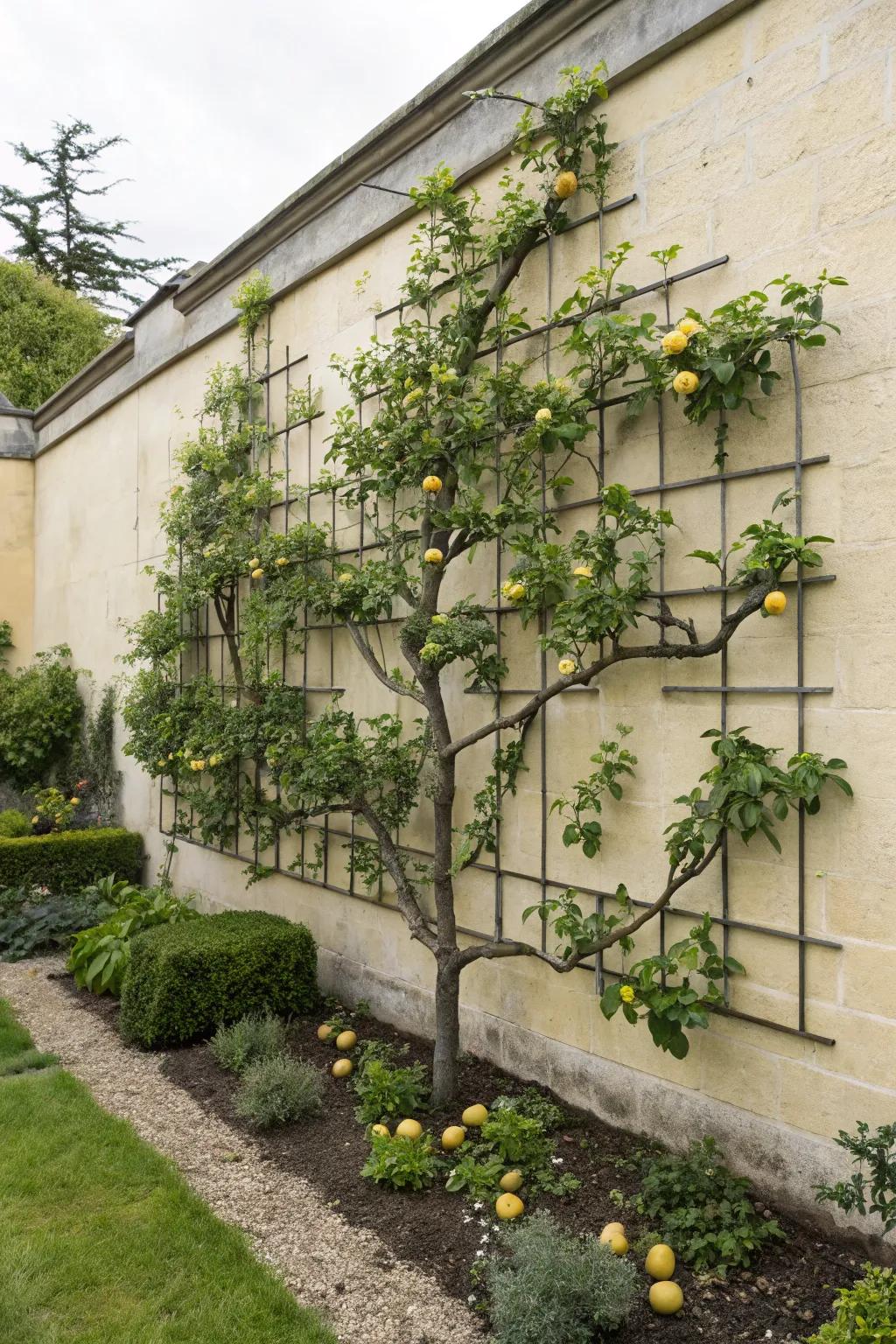
Use trellises to support espaliered fruit trees, turning your vertical spaces into productive art pieces. It’s a clever way to maximize space and add interest.
A few suggestions:
- Garden Trellis for Espalier Trees: Enhance your garden with a durable trellis and create vertical art with espaliered trees.
- Plant Ties for Securing Branches: Secure your fruit tree branches safely with flexible plant ties. Ideal for espalier setups.
- Espalier Fruit Tree Starter Kit: Start your espalier journey with this complete kit, perfect for beginners and experts alike.
12. Seasonal Color Blocking

Arrange different colored fruit trees in sections to create seasonal color blocks. It’s like painting with nature’s palette.
Try these:
- Fruit Tree Starter Kit: Kickstart your colorful orchard with a complete fruit tree starter kit. Easy and convenient!
- Organic Fertilizer for Fruit Trees: Nourish your fruit trees with organic fertilizer to enhance vibrant blooms and healthy growth.
- Pruning Tools Set: Ensure your fruit trees are well-maintained with this essential pruning tools set. Efficient and reliable!
13. Fruit Trees in Pots
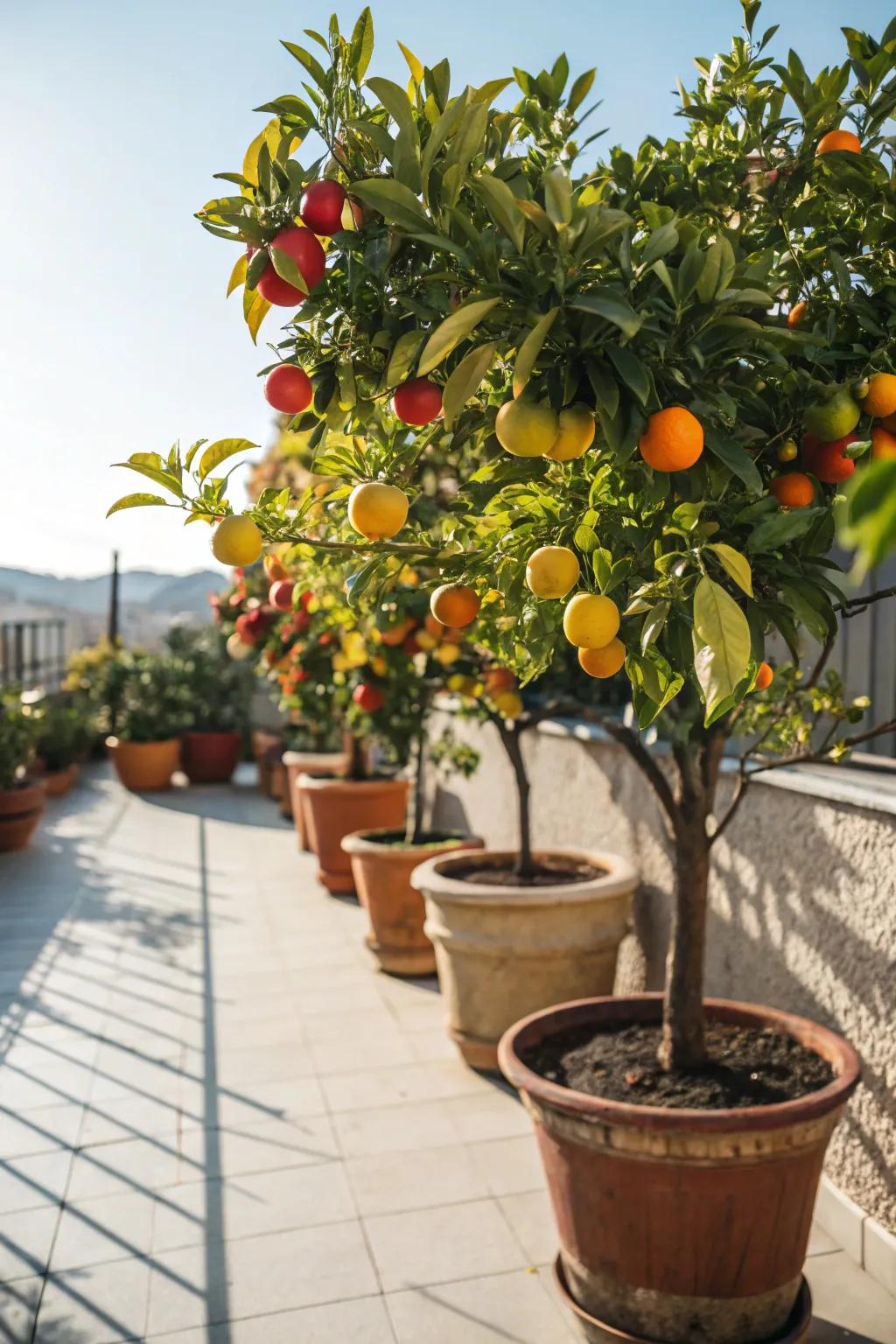
For those with limited space, growing fruit trees in pots is a great option. They’re mobile and can fit perfectly on patios or balconies.
Possibly helpful picks:
- Large Terracotta Planter Pots: Enhance your balcony with elegant terracotta pots for optimal fruit tree growth.
- Organic Potting Soil for Fruit Trees: Nurture your potted fruit trees with nutrient-rich organic potting soil.
- Fruit Tree Fertilizer Spikes: Boost your potted fruit tree growth with easy-to-use fertilizer spikes.
14. Colorful Seasonal Displays
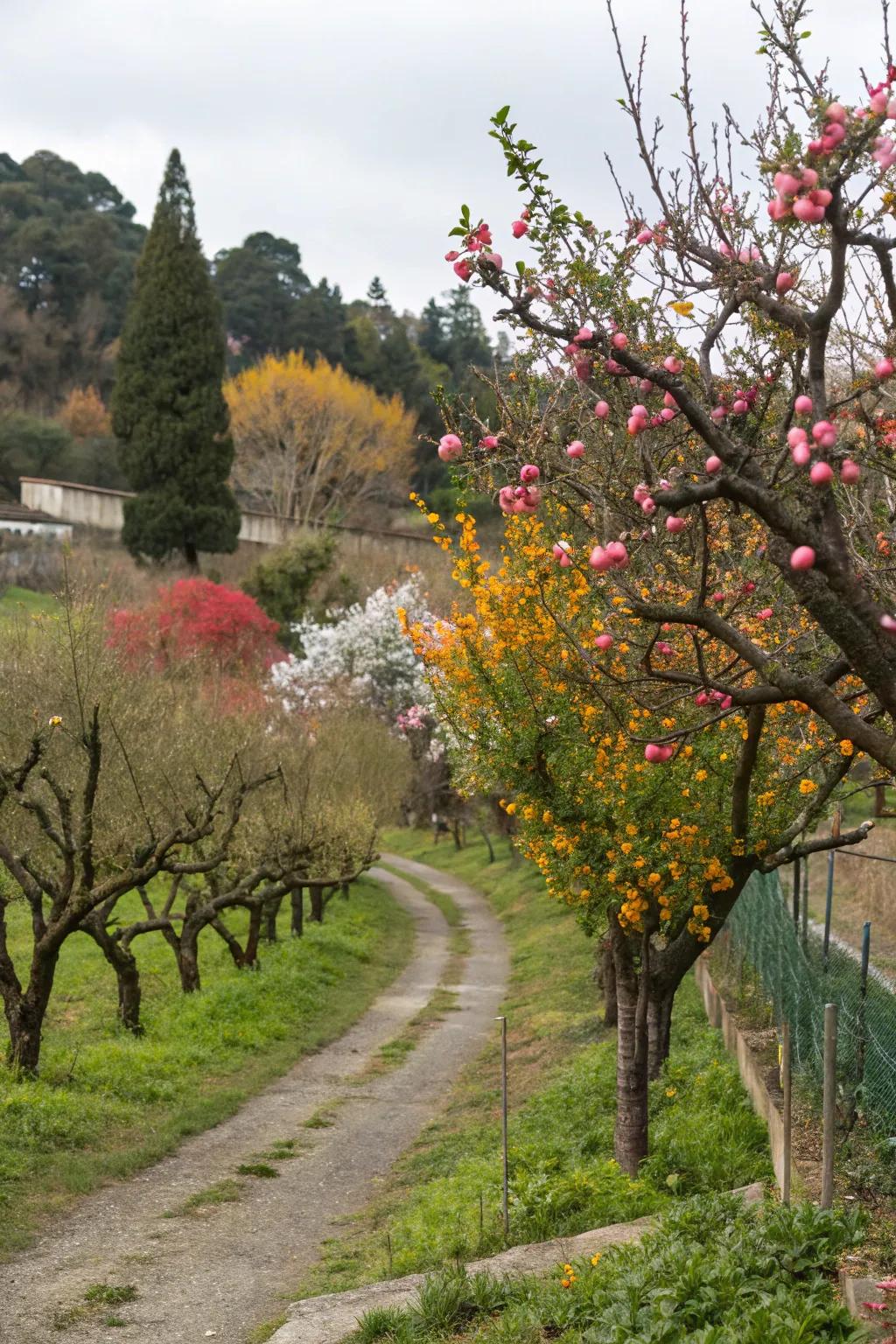
Select a variety of fruit trees to ensure colorful displays in every season, from spring blossoms to autumn fruits. It keeps the garden vibrant year-round.
These products might be useful:
- Fruit Tree Fertilizer Spikes: Boost your fruit trees’ growth with easy-to-use fertilizer spikes for vibrant seasonal displays.
- Orchard Pruning Shears: Ensure healthy growth and colorful blossoms with high-quality pruning shears for your fruit trees.
- Annual Colorful Fruit Tree Guidebook: Explore year-round care tips for vibrant fruit trees with this comprehensive gardening guidebook.
15. Fruit Trees as Focal Points
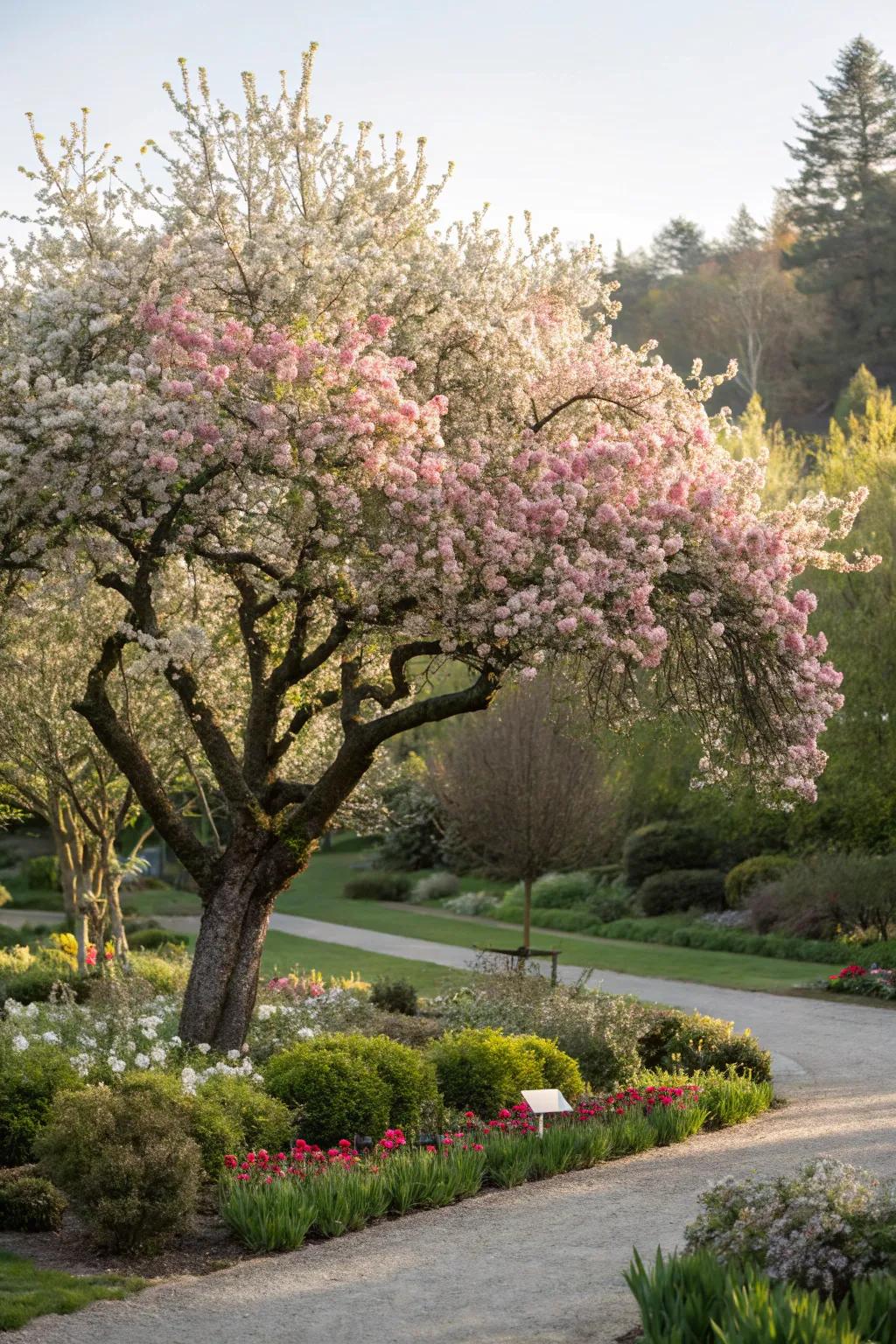
Place a larger fruit tree like an apple or citrus in the center of your garden to create a stunning focal point. It’s a great way to draw the eye and provide some shade.
A few things you might like:
- Fruit Tree Planting Kit: Get this planting kit and ensure your new fruit tree thrives beautifully in your garden.
- Decorative Garden Statuary: Enhance your focal point with a charming garden statue to complement your fruit tree.
- Garden Mulch for Fruit Trees: Add this mulch to enrich the soil and maintain a healthy moisture level beneath your tree.
16. Bird-Friendly Gardens
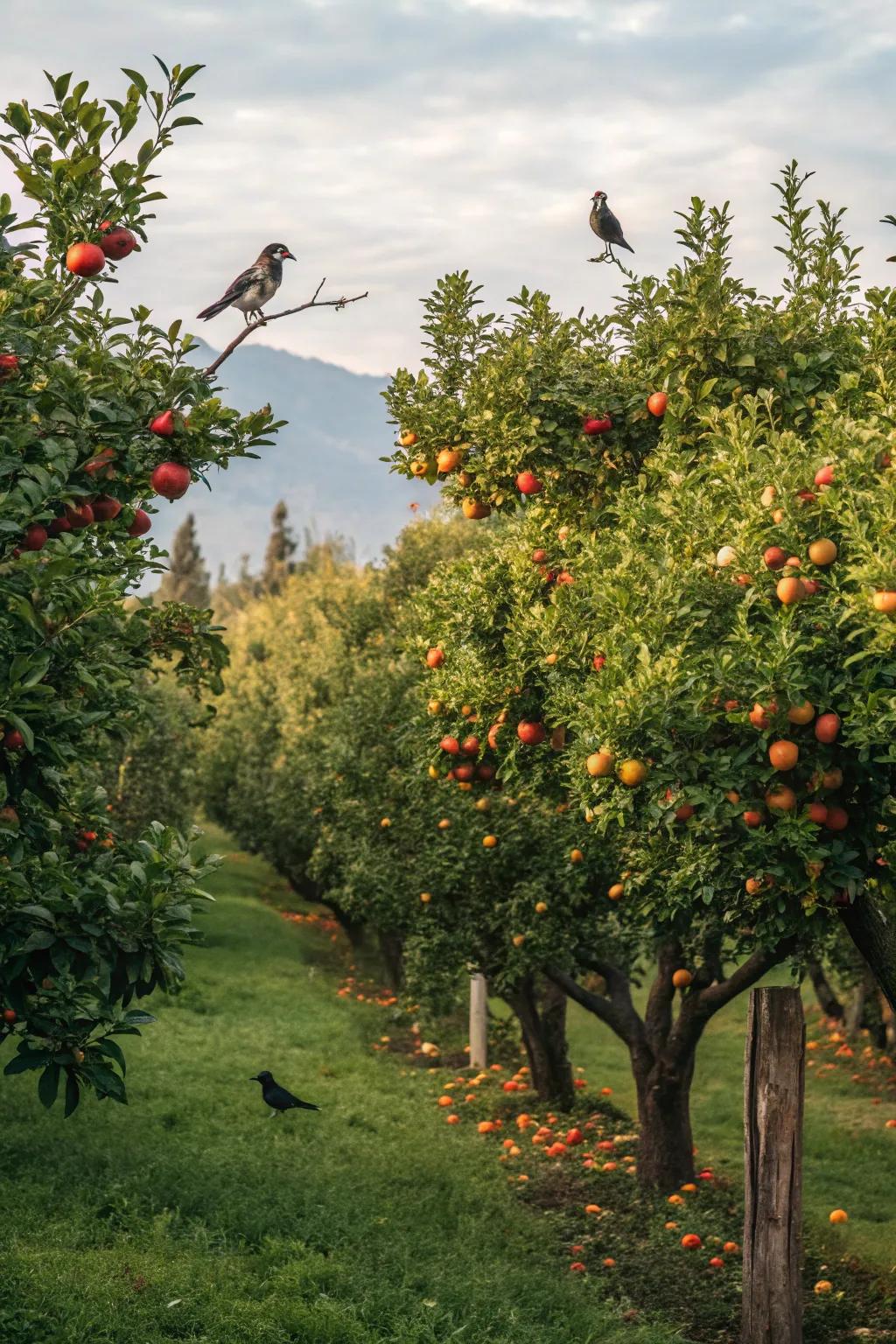
Planting fruit trees can attract birds, adding lively activity to your garden. It’s nature’s entertainment while you sip your morning coffee.
Might be a good match:
- Bird Feeder for Fruit Trees: Enhance your garden’s charm by installing bird feeders, attracting more birds to enjoy.
- Fruit Tree Netting: Protect your fruit while still inviting birds with easy-to-use tree netting.
- Garden Bird Bath: Add a refreshing oasis for birds with a stylish and durable bird bath in your garden.
17. Pathway Accents
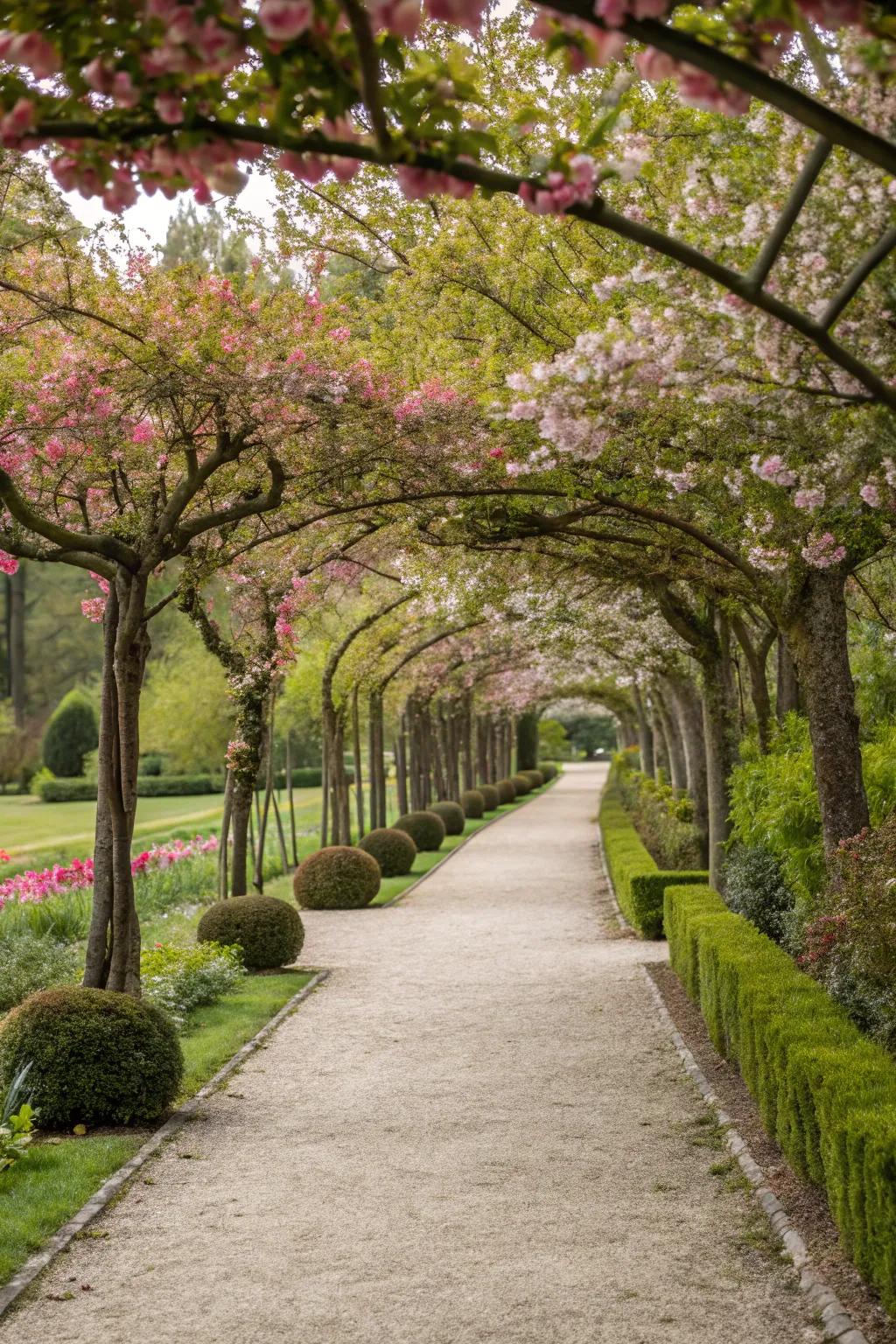
Line your garden paths with smaller fruit trees like dwarf cherry or plum. They add structure and make your pathway a delightful journey.
Some handy options:
- Dwarf Cherry Trees: Add charm to your pathways with dwarf cherry trees, providing beauty and seasonal interest.
- Garden Arbor Supports: Enhance your pathway with sturdy garden arbors, perfect for supporting your fruit trees.
- Organic Fruit Tree Fertilizer: Nourish your fruit trees with organic fertilizer for vibrant growth and delicious yields.
18. Surprise Urban Edibles
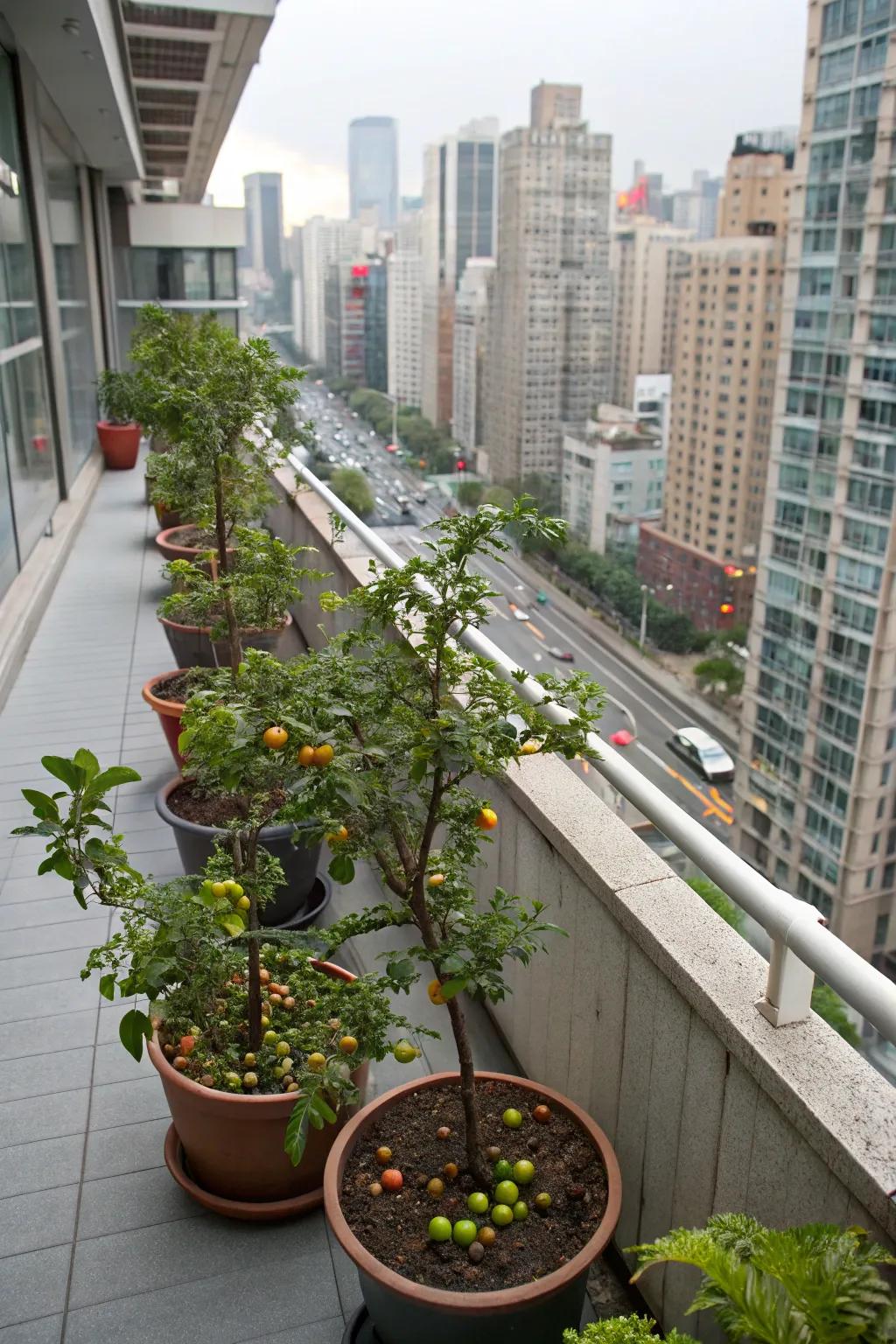
Transform a small urban space into an edible paradise with dwarf fruit trees. They’re compact yet productive, perfect for city living.
May just do the trick:
- Dwarf Fruit Tree Varieties: Transform your balcony with compact dwarf fruit trees, perfect for small urban spaces.
- Large Planter Pots: Elevate your urban garden with stylish, durable pots ideal for growing fruit trees.
- Organic Fruit Tree Fertilizer: Enhance fruit yield and tree health with specialized organic fertilizer for dwarf trees.
19. Orchard-Inspired Rows
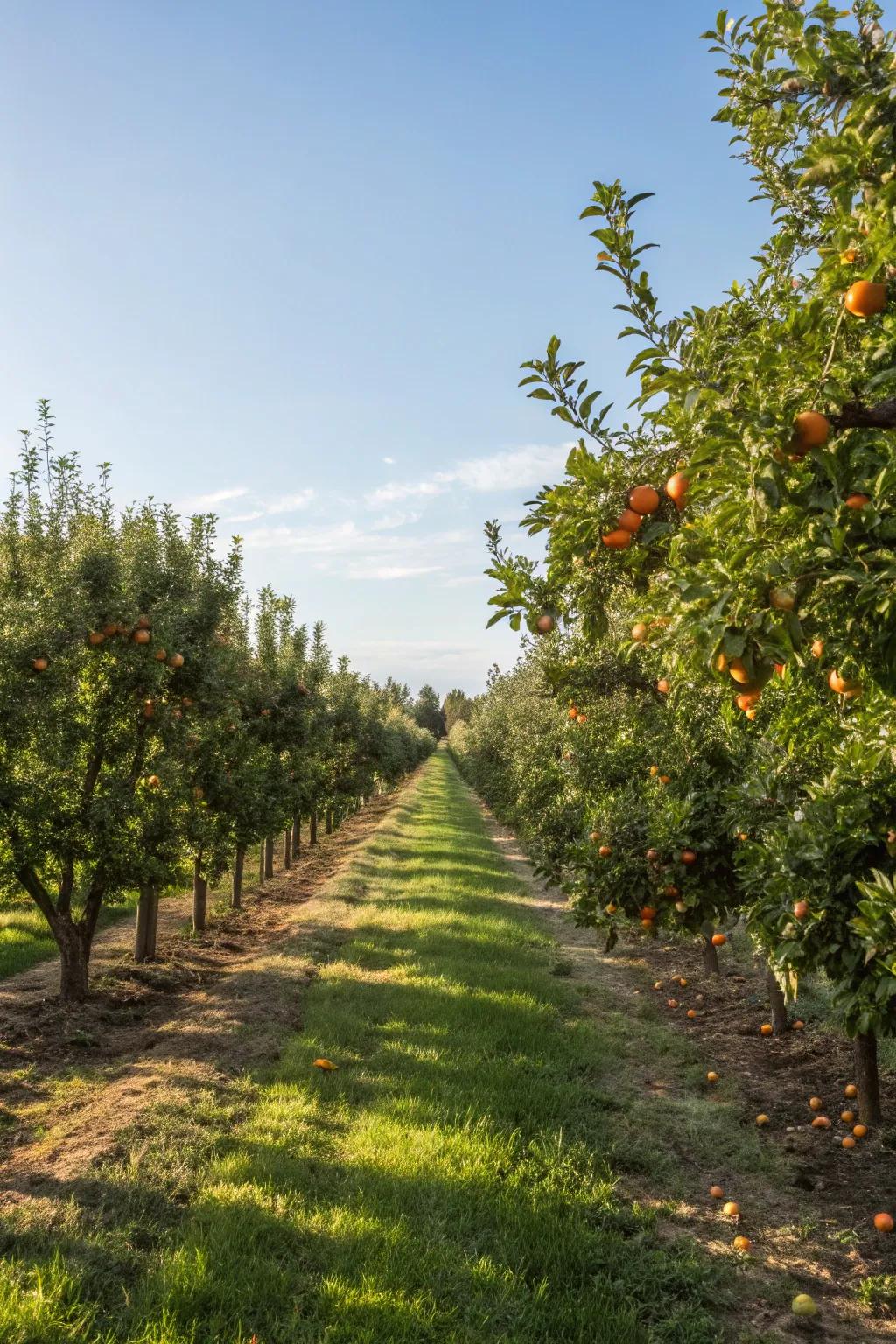
Imagine walking through neat rows of fruit trees, just like a mini orchard in your backyard. This structured style not only looks charming but also makes harvesting a breeze.
Check these products out:
- Adjustable Tree Pruner: Keep your fruit trees well-trimmed for maximum yield with this easy-to-use tree pruner.
- Organic Fruit Tree Fertilizer: Boost tree health and fruit growth with this effective and natural fertilizer.
- Wire Trellis Support: Enhance tree stability and growth direction with this simple wire trellis support.
